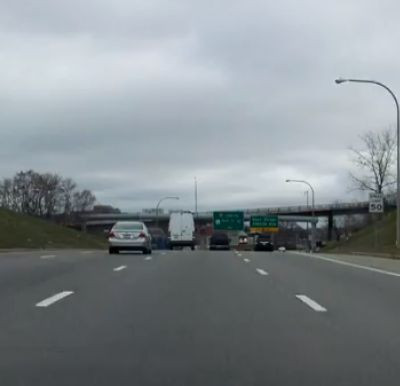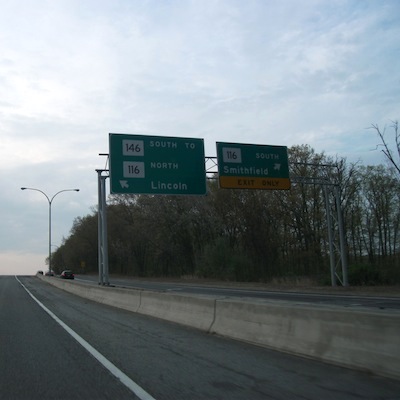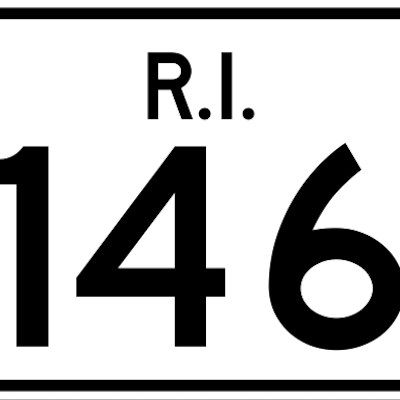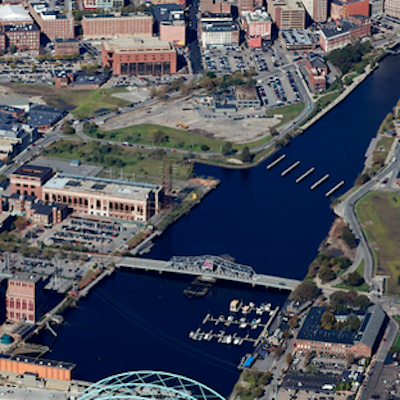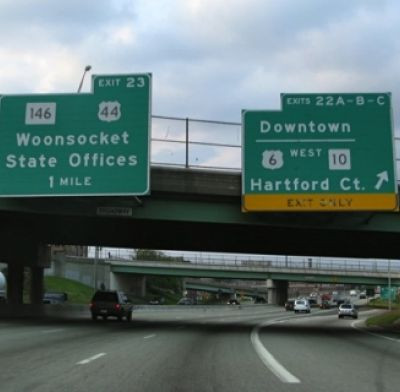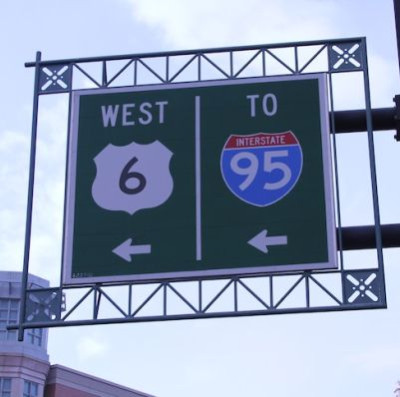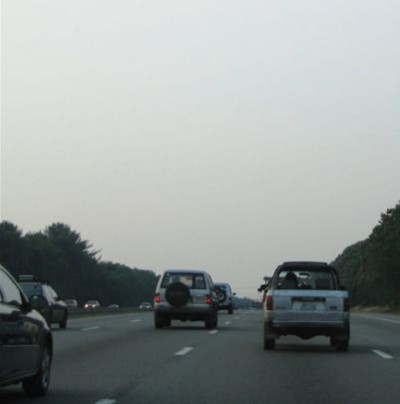RI Has Highest Percentage of Deficient Bridges in Country
Friday, May 22, 2015
The state of Rhode Island has easily the highest percentage of deficient bridges of any state in the country according to Federal Department of Transportation statistics and data.
Of the state's 766 bridges, 429 of them are considered deficient according to federal statistics. That's 56 percent of the state's bridges.
That puts the state well ahead of the national average. On a national level, roughly 24 percent of the bridges in the country are considered deficient.
GET THE LATEST BREAKING NEWS HERE -- SIGN UP FOR GOLOCAL FREE DAILY EBLASTThere are 610,749, bridges in the nation, and 145,890 are considered deficient.
Neighboring Massachusetts ranks a close second, with 52 percent of its 5,141 bridges being considered as having some level of deficiency. New York came a distant third place in the category of most deficient bridges in the country, with 39 percent of its 17,456 bridges being considered deficient.
About 23 percent of the state's bridges are considered "structurally deficient". Structurally deficient generally means that the condition of the bridge contains a significant defect. To be considered structurally deficient, a bridge's deck, superstructures, substructures, or culvert and retaining wall must receive sub-optimal ratings from inspectors.
There are 174 bridges in the state that are considered structurally deficient.
Functionally Deficient or Obsolete
Another 255 of the state's bridges are considered "functionally obsolete". Functionally obsolete generally means that the bridge in question is not sufficient to meet the use of what it was designed for--meaning it may lack the proper deck geometry, or the proper under-clearances, for instance. That means 33 percent of the state's bridges are considered functionally obsolete.
Neither rating, structurally deficient or functionally obsolete, mean that the bridge is unsafe for travel.
But if a bridge is considered either structurally deficient, or structurally obsolete, it is considered "deficient", according to federal data.
The vast majority of the state's deficient bridges are over 40 years old, according to the data.
The American Road and Transportation Builders Association recently released a list of the most traveled, deficient bridges in each state.
See The Most Dangerous Bridges In Rhode Island Below
Calls left at the state DOT communications office over the course of two days were not returned. Peter Alviti, the new DOT Director, has commented to other media outlets that he's very concerned about the condition of the state's bridges.
"A Bridge To Everywhere"
A report released last year under previous director Michael Lewis, entitled "A Bridge to Everywhere", that details the sorry state of Rhode Island's bridges, blames the age of the bridges, the state's cold winter climate, high population density, and changes in traffic volumes. But above all else, the report, predictably, blamed a lack of funding.
"The most critical element of bridge condition, however, is the level of investment made in ongoing maintenance. In Rhode Island, decreasing gas tax revenue, limited funding sources, and increasing debt service costs have led to a decline in the investment in Rhode Island’s roads and bridges. Simply put, Rhode Island hasn't been able to keep up with the needs of the aging infrastructure," the report states.
The report called for funding a state-funded capital program to supplement the gas tax and federal funding the state receives, saying that the gas tax is "simply not enough".
When certain taxpayer advocates hear that, they immediately think "tax increases".
"Raising taxes to fund bridge and road maintenance is not an option as Rhode Island already has high taxes," said Monique Chartier, a spokesperson from the Rhode Island Taxpayers association.
"Decades of poor policy decisions and bad spending priorities by prior General Assemblies have resulted in the deterioration of Rhode Island's bridges and roads. It has also left current elected officials with no easy options for catching up on years of deferred maintenance. If officials determine to increase spending on bridges and roads, every spending line item in the state budget must be closely examined for reductions so as to find room for this new spending."
Tax Increases on Horizon?
Chartier said that instead of spending money on a new baseball stadium in Providence, the state should invest in infrastructure instead.
Justin Katz, the research director of the Rhode Island Center for Freedom and Prosperity, agreed.
"In our view, roads and bridges are among the fundamental duties within the scope of government. They should therefore be among the first expenses covered within the budget," said Katz.
"There are plenty of areas within state spending that could be reduced to cover spending on infrastructure, from curtailing activities that are not within government's scope, to controlling disproportionate labor costs, to addressing the overzealous weaving of what's supposed to be a safety net into a web of dependency."
COVER PHOTO: Providence Public Library via Flckr
Related Slideshow: RI’s Most Dangerous Bridges
The American Road and Transportation Builders Association recently released a list of the most traveled, deficient bridges in each state. In Rhode Island, those bridges were:
Related Articles
- NEW: Chafee Defends 195 Commission Secrecy
- Is Rhode Island Squandering Its Opportunity to Redevelop I-195?
- 195 Bidder Carpionato Failed to Redevelop Providence Fruit Market
- NEW: Solomon Proposes Master Tax Stabilization Plan for 195 Land
- RI KIDS COUNT: RI Juvenile Arrest Rate Down 56% since 1995
- I-195 Redevelopment: Who Are the Players?
- NEW: Work Starts on Former 195 Land
- 95.5 WBRU’s Summer Concert Series to Rock Providence
- Downtown Providence Parks Conservancy Awarded $395K Grant
- Fung, Taveras Leasing Campaign Headquarters from 195 Bidder Carpionato
- NEW: Newport Yachting Center Sold to 195 Kane’s Firm
- NEW: 195 Redevelopment Consultant Contract Draws Nine Bidders
- RI Republican Caucus Asks to Reopen I - 95 North Welcome Center
- NEW: Providence Stadium Deal Opponents Pressure 195 Commission into Open Meeting
- Owners of Potential New PawSox Site Issue Statement As Alternative to 195 Land
- NEW: Providence Foundation Endorses 195 Location for Stadium
- Raimondo Names 6 New 195 Commissioners
- Minority Contractors Question Being Blocked From I-195 Development
- Providence City Council Members Question Dormitory Deal on 195 Land
- PODCAST: Opponents Blast Tax Breaks for 195 Dormitory Deal
- Opponents Blast Tax Breaks for 195 Dormitory Deal
- RI Smoke Shop Raid vs Route 95 Protest
- 195 Commission Announces New BioTech Proposal for Providence Land
- Russ Moore: 5 Things To Hate About Raimondo’s Budget
- Russell Moore: The Taylor Swift Tax Diversion
- Russell Moore: RI Government’s Culture of Secrecy
- Moore: Will PawSox Move be a Sweetheart, Insider Deal?
- Russell Moore: Fox a Symptom, Not Cause of RI Corruption
- Russell Moore: Fear and Loathing - RI Style
- Moore: Elorza’s Budget is a Bridge To Nowhere
- Moore: Mattiello Must Leave Pawsox Fate Up To Voters
- Moore: Call on Mattiello to Pass Ethics Bill
- Moore: Chafee’s Brilliant Decision
- Moore: A Preposterous PawSox Proposal
- Moore: Elorza Should Prioritize Students, Not Trolleys




